This article was co-authored by Michael R. Lewis. Michael R. Lewis is a retired corporate executive, entrepreneur, and investment advisor in Texas. He has over 40 years of experience in business and finance, including as a Vice President for Blue Cross Blue Shield of Texas. He has a BBA in Industrial Management from the University of Texas at Austin.
wikiHow marks an article as reader-approved once it receives enough positive feedback. In this case, 96% of readers who voted found the article helpful, earning it our reader-approved status.
This article has been viewed 221,086 times.
Every business makes small purchases each day for items such as office supplies, stamps, shipping charges, and other miscellaneous items. Writing a check for such items is time-consuming and expensive. Establishing a petty cash fund allows a business owner to maintain control and account for the expenditures with minimal cost and administrative hassle. If you follow a few steps, it is possible to set up and manage a petty cash account with ease.
Steps
Establishing the Petty Cash System
-
1Purchase a lock box. When you are starting a petty cash fund, you need to buy a lock box that will hold the cash available for use and the receipts for what has been spent. You need a small, metal box that can easily fit within a desk drawer. This box can either have combination lock or have a key lock, depending on what is best for your particular office. Either way, it needs to be extremely secure to deter people from tampering with the box.
- You need to have a box big enough to keep all the money and receipts in, but small enough to be inconspicuous and easily hid. Make sure you get one with a money tray so the bills and change can be easily organized.[1]
- These are available in most stationery or office supply stores.
-
2Assign responsibility for the petty cash fund. Once you have a place to store the money, you need to assign an individual in charge of the petty cash box and account. The person you assign should be generally available to any employee who might have need of petty cash, such as an accounting clerk or an administrative assistant.
- The custodian or cashier of the petty cash box is responsible for disbursing petty cash funds in return for written receipts, replenishing cash in the fund when needed, and recording items purchased or paid for with petty cash funds.
Advertisement -
3Store the petty cash box. Petty cash boxes should be kept out of sight in a closed drawer. The drawer needs to be in the custodian's desk or another drawer that is easy for the custodian to get to. The combination or key to open the box should be kept in a different drawer, possibly on the key chain of the custodian. It depends on who else needs access to the box and if you have more than one custodian.[2]
- To add an extra layer of protection, the drawer you keep the box in can also have a lock. This would provide additional security for the money that is kept there.
- If you have more than one person who needs access to the cash box, think about having multiple keys made or finding a box that comes with additional keys.
-
4Determine the withdrawal limit. Petty cash is not intended to replace or avoid accounting control of expenses. It is set up as a convenience for small purchases that do not warrant writing checks. You need to establish the maximum transaction amount to be handled through the petty cash system. This way, any transaction above that amount can be handled through the normal purchasing process.
- For example, a company might restrict petty cash transactions to $50 or less. Any transaction above $50 would then be processed as a normal account payable.
-
5Deposit cash into the petty cash fund. Once you have the basics covered, you need to put money into petty cash. You should write a check to the custodian to initially establish the fund. The check amount should be sufficient to handle most cash purchases for the time period you choose, but not so large as to encourage theft. Once the check is cashed, the money should be placed into the petty cash box.
- A typical beginning amount is between $100-$500.[3]
- Make sure you keep all denominations of bills in the petty cash drawer. You should have a few $20, a few $10, a good number of $5, and a decent amount of $1. You should also have coins as well. This will make it easy to reimburse petty cash payments.
-
6Create a petty cash transaction log. With the first initial payment to petty cash, the custodian should start a log of the transactions that go through the petty cash box. This can be a simple hand written accounting log or an online spread sheet kept up with by the custodian. The petty cash custodian should keep up with each transaction by placing it in the log. There should be a line for the description of the transaction, such as office supplies or shipping charge. There also needs to be a column for the amount spent and the person who used the petty cash.
- There should also be a column for deposits to the account to keep track of when the fund is replenished. The first payment to petty cash should be placed in the log as a petty cash deposit. Then all the transactions can be deducted from this amount.
-
7Establish the petty cash fund on the accounting records of the company. Cash and petty cash accounts are both asset accounts. When initially opening the petty cash fund, cash is simply transferred from one asset account to another with no effect on the balance of the organization’s assets. Once the petty cash fund becomes its own entity, you should keep track of it as a separate account that can be tabulated just like any other account.
- The transactions that are made to the company's account for opening the petty cash fund should be a credit from the cash account for the amount of the check given to petty cash. You can then transcribe the transaction to the petty cash fund as a debit of cash to the account, which will establish its initial balance from $0 to the amount you deposit into the fund.[4]
- In this stage, there has been no actual expense because the money has simply been transferred from one account of the company to another, so the total assets of the company are unchanged.
-
8Start using the money. Once there is enough cash in the petty cash box, the business can start using it for small transactions. The custodian should require a receipt for each petty cash purchase. When presented with the receipt of purchase, the custodian should note the date and name of the purchaser on the receipt and deposit the receipt in the petty cash box.
- The custodian should also reimburse the purchaser with exact change for the purchase.
- The custodian can also give an advance on petty cash in order to buy something. The company can come up with a system where the person who is going to buy something comes to the custodian for a cash advance. The custodian can mark the purchase in a log to explain what the purchaser intends to buy with the cash advance and how much is needed. Once the purchaser buys the products he set out for, he should return to the custodian with the receipt and change.
Managing the Petty Cash Expenditures
-
1Replenish the cash. The accounting clerk needs to replenish the amount of cash in the petty cash fund as often as needed. The custodian should start another log each time the fund is replenished. The custodian should give the completed list and accompanying receipts to the designated accounting clerk. He will audit the receipts, check the addition of the petty cash receipts, and write a check to the custodian for the total amount spent in order to replenish the fund.
- The custodian then cashes the check and deposits the funds in the petty cash box, restoring the beginning balance of the petty cash fund.
- If the petty cash is not used all that often or if there is a larger amount in the box, you may never use all of the petty cash. In these cases, the clerk can replenish what has been taken out once a month in order to keep track of the expenditures and help with the accounting of the petty cash.
- If you find that you need more money in your petty cash, you can increase the balance of the fund at any time. All the accounting clerk has to do is write a check to the custodian for the additional amount. For example, if the $100 initial balance is insufficient to pay the expenses the majority of time, increase the fund to $200 by writing a check to the custodian for a second $100. The custodian should then follow the normal procedure for replenishment.[5]
-
2Account for the petty cash transactions. Once the list of transactions from the petty cash custodian is complete, the accounting clerk will confirm that a receipt is present for each transaction, and that expenditures are properly added to calculate the sum. He should then sort each receipt into the appropriate expense category and total the expenditure for each category.
- Common expense categories that use petty cash include postage, office supplies, and transportation.
- There is no need to make an entry for each transaction since an individual small expense is insignificant in the operation of the company. Log them as complete sums under each category.
- It is important to ensure that the total amount of receipts equals the amount initially in the petty cash account. Any variation may mean a purchase was not accounted for. For example, if you had $100 in the petty cash account, once it is drained, you should have $100 in receipts.
- The initial cash as a petty cash run rarely goes to 0. The receipts should equal the difference between the initial cash in petty cash account and the remaining cash before reimbursement.
- Accordingly, the check for reimbursement should equal the total of receipts and bring the petty cash fund back to original balance.
-
3Log the expenditures. After sorting and totaling the receipts in each of the expense categories, the accounting clerk should properly record the expenses associated with the petty cash receipts.
- He should credit the cash account first for the total amount of the reimbursement to petty cash, which reduces the balance of the main cash account by the same amount.
- He should then debit the individual expense accounts for the sums spent in each. The total debit in the expense accounts will equal the credit of the petty cash account.[6]
- For example, if you have $200 in petty cash receipts, you would then need to record that $200 in the appropriate expense accounts. If all the $200 were "office expenses," you would debit the office expense account $200. [7]
- The accounts for each type of expense will increase by the amount spent in each category to show that the company spent that much on those items. Then, the net income of the company will decrease by the amount spent on the expense statement.
Expert Q&A
-
QuestionCan petty cash money be used to buy pain killers for employees?
 Michael R. LewisMichael R. Lewis is a retired corporate executive, entrepreneur, and investment advisor in Texas. He has over 40 years of experience in business and finance, including as a Vice President for Blue Cross Blue Shield of Texas. He has a BBA in Industrial Management from the University of Texas at Austin.
Michael R. LewisMichael R. Lewis is a retired corporate executive, entrepreneur, and investment advisor in Texas. He has over 40 years of experience in business and finance, including as a Vice President for Blue Cross Blue Shield of Texas. He has a BBA in Industrial Management from the University of Texas at Austin.
Business Advisor Yes, if the expense is approved by company policy.
Yes, if the expense is approved by company policy. -
QuestionIs an accounting record for petty cash an official document, like a general journal?
 Michael R. LewisMichael R. Lewis is a retired corporate executive, entrepreneur, and investment advisor in Texas. He has over 40 years of experience in business and finance, including as a Vice President for Blue Cross Blue Shield of Texas. He has a BBA in Industrial Management from the University of Texas at Austin.
Michael R. LewisMichael R. Lewis is a retired corporate executive, entrepreneur, and investment advisor in Texas. He has over 40 years of experience in business and finance, including as a Vice President for Blue Cross Blue Shield of Texas. He has a BBA in Industrial Management from the University of Texas at Austin.
Business Advisor No. Most petty cash funds are accounted for with a simple listing of expenses.
No. Most petty cash funds are accounted for with a simple listing of expenses. -
QuestionWhat is the amount needed to establish a petty cash fund?
 Michael R. LewisMichael R. Lewis is a retired corporate executive, entrepreneur, and investment advisor in Texas. He has over 40 years of experience in business and finance, including as a Vice President for Blue Cross Blue Shield of Texas. He has a BBA in Industrial Management from the University of Texas at Austin.
Michael R. LewisMichael R. Lewis is a retired corporate executive, entrepreneur, and investment advisor in Texas. He has over 40 years of experience in business and finance, including as a Vice President for Blue Cross Blue Shield of Texas. He has a BBA in Industrial Management from the University of Texas at Austin.
Business Advisor Petty cash money can be used to buy pain killers for employees if the expense is approved by company policy.
Petty cash money can be used to buy pain killers for employees if the expense is approved by company policy.
References
- ↑ http://www.accountingtools.com/questions-and-answers/what-is-a-petty-cash-system.html
- ↑ http://www.accountingtools.com/questions-and-answers/what-is-a-petty-cash-system.html
- ↑ http://www.accountingtools.com/questions-and-answers/what-is-a-petty-cash-system.html
- ↑ http://www.accountingtools.com/petty-cash-accounting
- ↑ http://support.quickbooks.intuit.com/support/pages/inproducthelp/core/qb2k12/contentpackage/core/petty_cash/task_petty_cash_money_in.html?family=pro
- ↑ http://www.accountingtools.com/petty-cash-accounting
- ↑ http://www.accountingtools.com/petty-cash-accounting
About This Article
To account for petty cash, create a transaction log that covers the date, the person who used the petty cash, a description of the transaction, and any other deposits or expenses. You'll also want to purchase a lock box for the cash and receipts. Deposit $100-$500 to start the fund, and make sure to have small and larger bills as well as coins. Finally, assign a custodian or cashier to be in charge of the petty cash fund to keep the process consistent and secure. For tips on how to replenish the petty cash fund, keep reading!







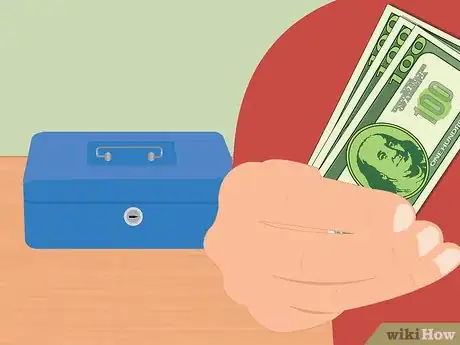


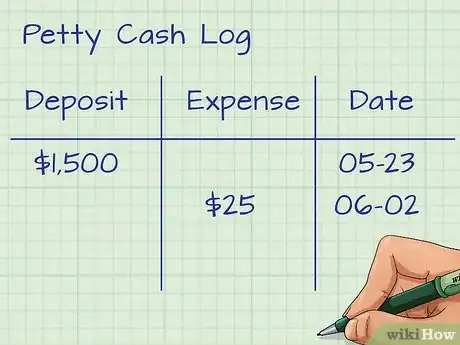


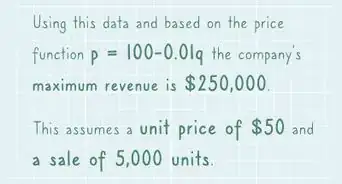

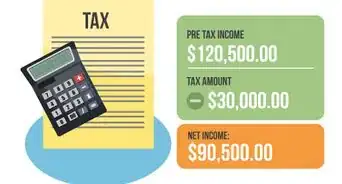

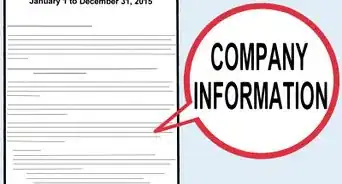

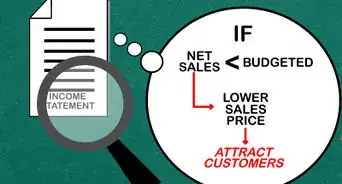
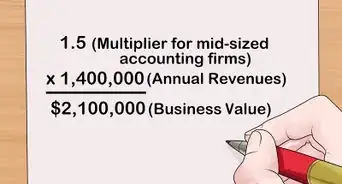

-Step-04.webp)



















































